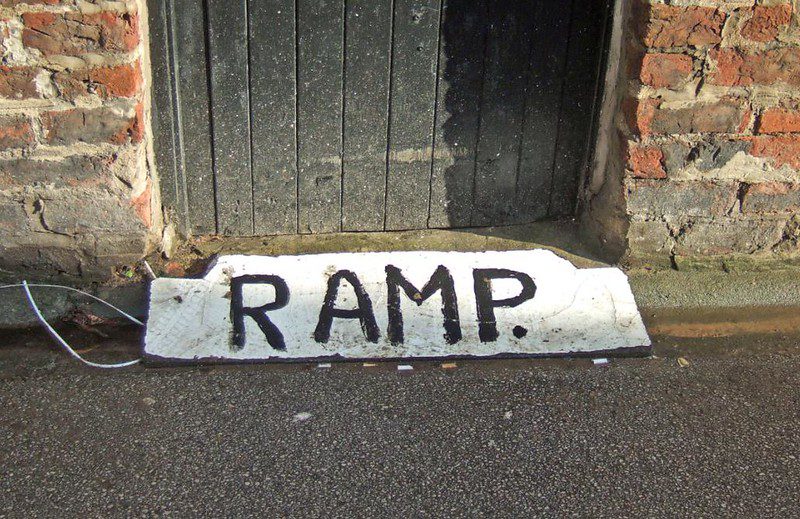[Editors Note: NYC housing advocates are calling for more home rule for New York City in setting policies such as rent stabilization. Given that rent stabilization basically only affects New York City, we can certainly sympathize with the frustration of it being the hands of a remote and often unsympathetic state legislature. But home rule is not always so simple. Sometimes, as with NJ's Mt. Laurel decision or Massachusetts' 40B law, a state overrules home rule on housing topics for the purpose of increasing fair housing and affordability. What do you think? Do you want your state more or less involved in local housing policy? Can areas that are appropriate for home rule and areas that aren't be separated?]
Tenants in New York City have been fighting to regain local control of our rent and eviction protections since it was taken away under Gov. Nelson Rockefeller in 1971 and placed at the mercy of the notoriously corrupt state legislature.
The demand has been growing stronger as Albany repeatedly weakened rent and eviction protections, contributing to record homelessness and an affordability crisis for a majority of New Yorkers.
Now is the time to put the demand for home rule front and center.
Synergy
In recent months, the question of self-determination—the ability of a locality to enact policies as it sees fit to address its needs and priorities—has become a key question in a wide range of policy disputes ranging from universal pre-kindergarten to environmental objections against fracking, from traffic safety to living wages, from the location of casinos to stronger rent and eviction protections.
On Jan. 23, calling for the power of NYC to impose a tax on those earning above $500,000 per year in order to fund universal-prekindergarten classes—a cornerstone of his campaign—Mayor Bill de Blasio said “New York City should be given the right to make decisions for itself. It’s the case of self-determination or home rule.”
“The people of New York City have spoken,” de Blasio added, referring to his overwhelming electoral victory in November.
That same week, NYC Comptroller Scott Stringer traveled to Albany to call for home rule power to raise the city’s minimum wage to $11 per hour, and a New York TImes editorial said the residents of Saratoga Springs should get to decide whether a casino is opened there, stating “Having no real say in the matter is simply unfair to the communities that are often saddled with the downsides of these gambling operations.”
On the environmental front, community opposition to the controversial hydrofracking technique has been challenged by energy industry claims that only the state may regulate it. More than 100 communities around the state have adopted antifracking ordinances, but the NY Court of Appeals is scheduled to determine whether they are enforceable.
Traffic safety is another area in which New York City’s ability to protect its residents is at issue. According to Transportation Alternatives, there is widespread agreement that lowering the speed limit on New York City streets from 30 mph to 20 mph will save many lives, but currently only the state can act. First as a candidate, and again as mayor, de Blasio has called for NYC home rule powers over traffic safety.
As New York’s housing crisis has continued to deepen, the city has been powerless to use the rent laws to address it, because of Rockefeller’s 1971 “Urstadt” Law. With the power to act, the city council could enact stronger rent and eviction protections for a million rent stabilized families and also extend protections to the hundreds of thousands of families living in apartments that are not currently regulated because of vacancy destabilization, loss of Section 8 or Mitchell-Lama protection, or any other reason.
For the first time the people of New York City have elected leaders who are strong supporters of restoring NYC home rule over housing. Mayor de Blasio, Public Advocate Tish James, Controller Scott Stringer, and City Council Speaker Melissa Mark-Viverito have all expressed strong support for restoring home rule, as have the Working Families Party and the Progressive Caucus of the City Council.
The sudden emergence of home rule as a key issue in so many struggles makes a successful coalition almost inevitable.
As Juan Maldonado, general council of Transportation Alternatives, puts it, “Traffic deaths on our streets, along with our broken rent laws, are a symptom of a broken political process that puts lawmakers who don’t represent New York City in charge of policies that are vitally important to New York City residents.”
A slightly edited version of this article will appear in the February 2014 issue of Met Council on Housing's monthly newspaper Tenant/Inquilino available at metcouncilonhousing.org.
(Photo by Dustin O'Donnell Designs CC BY)





Slash the rents in NYC , every stabilized apartment should get a rent freeze and a retroactive 25% refund or a rent discount. Owners had it real good, now it’s payback time for tenants , slash the rents now.